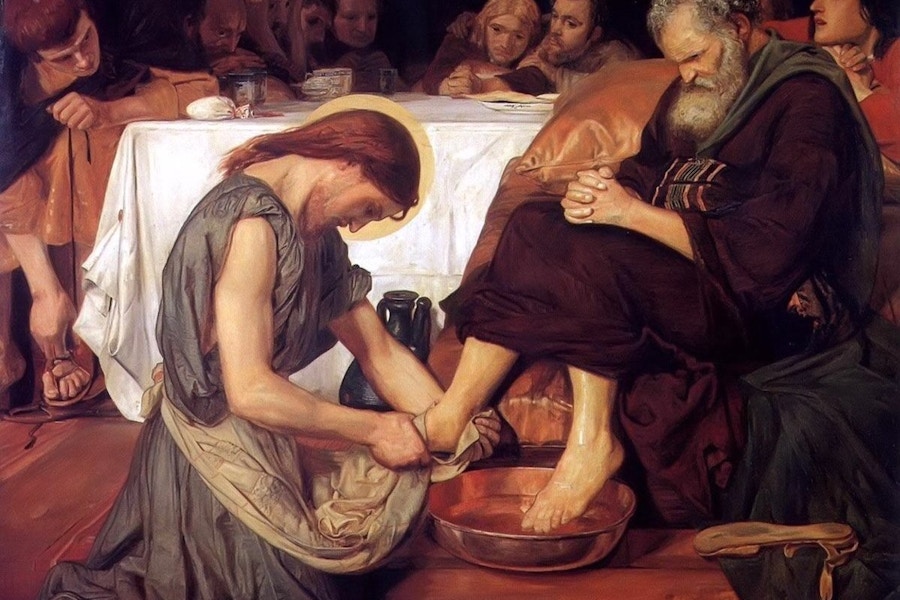Jesus “knew that his hour had come” (John 13:1). That knowing infuses the story with dramatic irony: we, who come after, may recognize how all these events, so baffling at the time, fit like pieces in a mosaic whose beauty and order can be apprehended only from a distance — really only from a distance greater than twenty centuries.
Jesus knew what he was about. It was always, as he told his mother, his Father’s business. He knew that what would happen must happen. He was not simply a victim of political violence; he submitted with complete awareness of what his captors were bringing about, who knew not what they did.
“Already” is a key word in this story and in ours. God has already prepared a place for us. Forgiveness has already been given. The Spirit is already at work wherever we show up. Our deepest questions have already been answered and our deepest needs met in ways it may take us a lifetime to fathom. This is the mystery of predestination — not a simplistic notion of scripted action that forecloses freedom, but a reminder that the God who entered history is also the One who lives outside time, whose mind is the source and ground of all being.
In the story we see a series of simple verbs: Jesus rose, laid aside his garments, took a towel, tied it around his waist, poured water, washed feet, and dried them. Each act has its separate significance as a feature of divine encounter.
And this night is the moment of divine encounter. God meets us here, again. Like Peter, we may not be ready for that meeting. Jesus’s words to Peter are full of compassion for his very human limits: “What I am doing you do not understand now, but afterward you will understand” (John 13:7).
Peter lived, and we live, in time. But now and then the veil lifts, perhaps in the deep quiet of prayer or meditation, perhaps at the moment of holding out our hands to receive the sacrament, perhaps in some awakening to what Wendell Berry called “the larger, looser, darker order of merely human love.” At those moments we may be surprised by joy, finding ourselves at “the intersection of the timeless with time,” in T.S. Elliot’s poignant words, plunged into the Now that is God’s dwelling place.
Excerpted from Where the Eye Alights by Marilyn McEntyre ©2021 (Wm. B. Eerdmans Publishing Co.) Reprinted by permission of the publisher.
Image: Jesus Washing Peter’s Feet, Ford Madox Brown, c. 1852 – 1856 source
· Last Featured on Renovare.org March 2024


